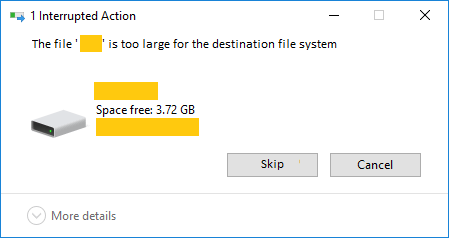

Despite the existence of several different file systems FAT32 is the file system most common on smaller removable storage devices like USBs. These rules can exist in the form of security restrictions, file types, and file sizes. These file systems provide for a set of "rules" by which all of the items stored on your device must adhere. While most flash drives tend to look and function the same, each USB has an internal file system that can affect how you are able to store data.

The process will then visually begin and after a minute your drive should be fully reformatted and ready to store files larger than 4GB. (Read more of this blog post for help choosing one)

Your drive should now have the ability to store files larger than 4GB. In the file system drop down, select the exFAT.In the left pane right click the name of your USB drive.Insert your USB flash drive into your computer (obviously).Windows makes formatting external drives extremely simple. How to format a flash drive on Windows 10. So be sure to back up your drive before proceeding. Warning: When you format your flash drive, it WILL erase all the contents. How to format a flash drive on Ubuntu 18.04.How to format a flash drive on Windows 10.



 0 kommentar(er)
0 kommentar(er)
